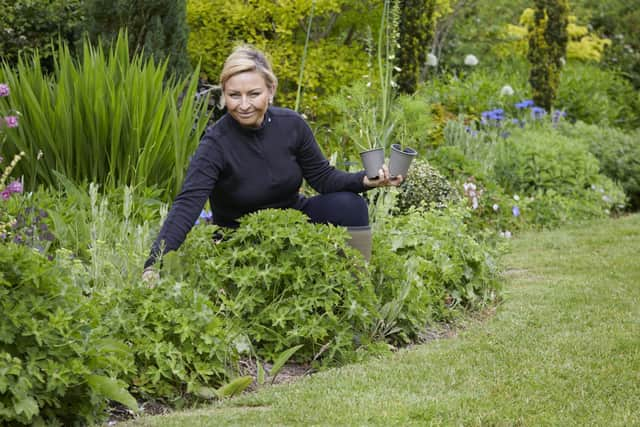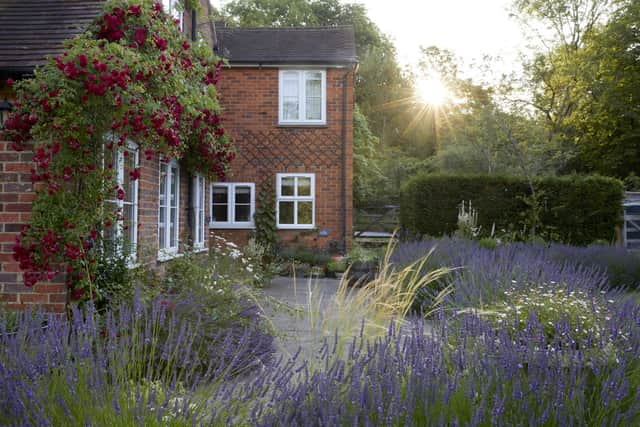How to create a beautiful garden without spending a fortune
The whole thing has cost her around £1,000, she reckons, because she has grown from seed, propagated, made money-saving purchases from community marketplaces and also makes her own compost and fertiliser.
“You can create the most breathtaking, stunning garden, spending hardly any money,” she insists.
Advertisement
Hide AdAdvertisement
Hide Ad“It’s always been been in harmony with nature,” she explains of the garden she has created. “We didn’t do much hard landscaping. We already had the patio and used some old paving slabs and some gravel to create a little hard landscaping,” but she much prefers the plants to be the focus.


Today, the mother-of-two demonstrates all the skills she’s learned on her Instagram feed @anya_thegarden_fairy, where she has amassed 465,000 followers and another 58,000 on TikTok, where she offers money-saving gardening tips.
She has also written The Money-Saving Gardener to help people create their dream garden at a fraction of the cost.
Lautenbach offers the following advice:
Before you start


Do some research. Check your soil – is it heavy clay or sandy, full of stones or does it feel rich and moist? This will designate what type of plants you could grow, along with the amount of sun you get.
Use what’s available in your garden
Advertisement
Hide AdAdvertisement
Hide Ad“Anything that my garden produces I turn into precious materials. I improve my soil by using grass cuttings. I have clay soil and didn’t have enough money to buy mushroom compost so I started putting grass cuttings on my borders. Over the years that has created amazing soil.” She also makes her own compost and makes her own fertiliser from comfrey.
Don’t invest in unnecessary tools
For people who are doing a little bit of gardening, a fork and trowel and maybe a spade and a rake are necessary, but only add to your tool collection gradually, depending on the size of the garden and the storage area, she recommends.
“You don’t have to buy new tools. If you have a local village group, whether it’s a gardening group or on social media, reach out and ask if anyone’s getting rid of any gardening stuff. Sometimes people will give you things for free, whether it’s tools, pots or even plants that they’ve grown.”
Grow from seed
You’ll get more plants from a packet of seeds and if they take, they are likely to grow stronger and more resilient than more expensive shop-bought plants. Grow perennial plants from seed as they will come back year after year, she recommends.
Advertisement
Hide AdAdvertisement
Hide Ad“If you buy a plant that’s an annual, you only get it for a year for your money and you need compost and everything else. With perennial plants you make the same amount of effort but you have a much longer-lasting impact,” she says.
Buy small
“If you don’t have the time, space or inclination to grow from seed, buy your plants small in early spring. Seedlings will grow quickly in the right place.”
Reach out to other gardeners
Be pro-active. Ask around to find out if your neighbours or local online community might be getting rid of some plants which they may have divided or pots they don’t have room for, or simply don’t want any more, she suggests. October and November are good months to go on online marketplace sites, as people are often looking to de-clutter, as Christmas approaches.
Make plant supports from prunings
“Whenever I prune, with every branch I feel like I’ve found gold. Birch and hazel are the best. Not everyone will have them but there are coppicing companies that sell them very cheaply.”
Don’t dismiss sale plants
Advertisement
Hide AdAdvertisement
Hide AdPlants that are in the sale may look dishevelled, but they should come back, given the right conditions, she says. “You get a great sense of achievement if you rescue plants, as well as saving money. Go at the end of the season because you’ll get amazing plants for half price.”
Propagate your plants
“Propagation is my life. We need to show people how easy it is to create your own plant from another plant. Propagation is easier than most people think.
“People might think you need a big greenhouse but that couldn’t be further from the truth. I don’t believe in heated greenhouses because they are bad for the environment, and I’ve propagated thousands of plants – not a single one was in the greenhouse. Most plants are happy to be outside.”
Cuttings can be stored outside, although frost-tender plants such as pelargoniums will need to be protected.
Advertisement
Hide AdAdvertisement
Hide AdSome propagated plants take longer to flower than others, she observes.
The Money-Saving Gardener: Create Your Dream Garden At A Fraction Of The Cost by Anya Lautenbach is published by DK on February 8, priced £16.99